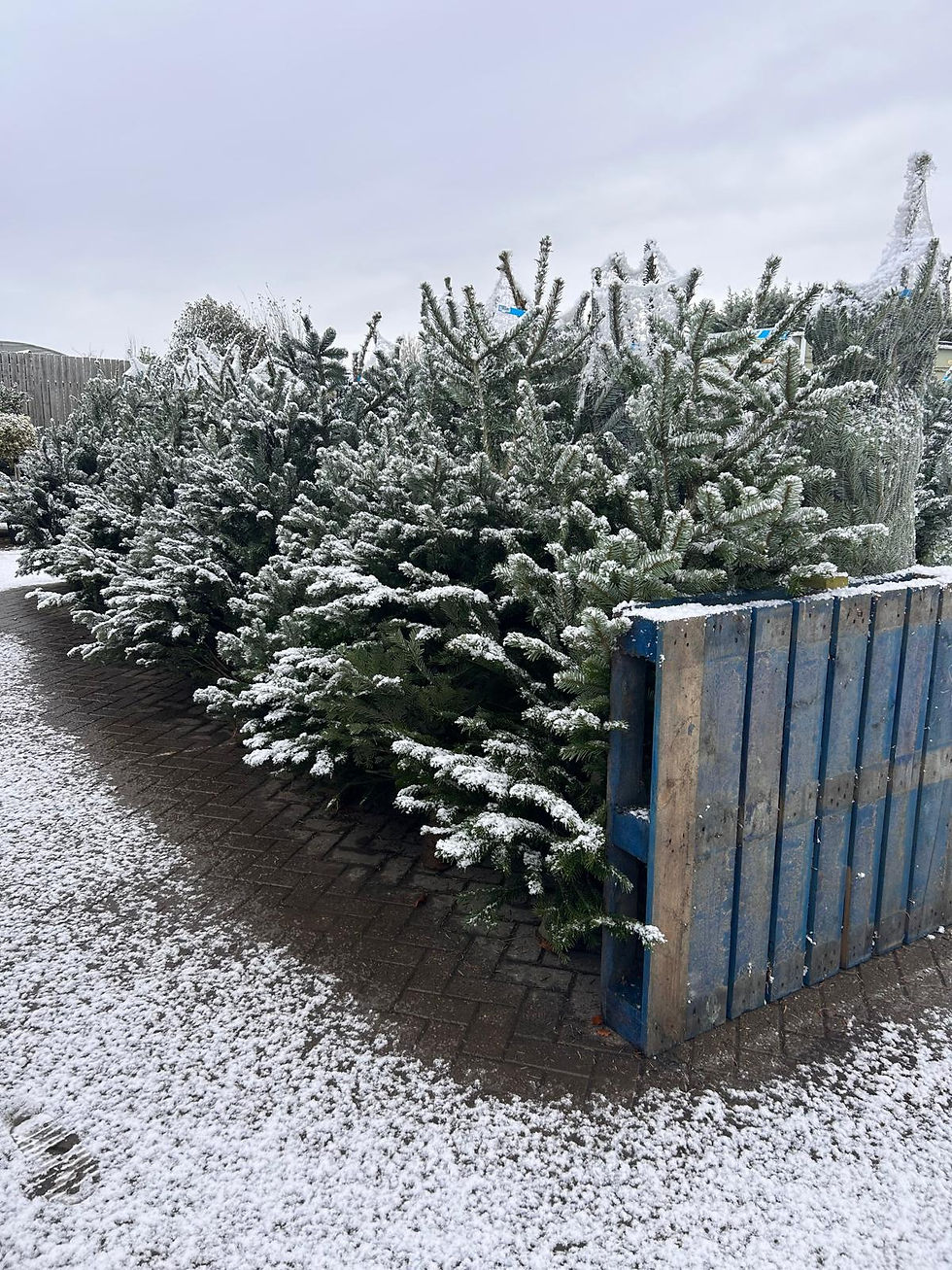Eco-Friendly, Sustainable Landscaping for the Colder Months
- philippa-robinson
- Oct 27
- 3 min read
As summer slips away and growth slows, it can be tempting to forget about the garden until spring. But autumn and winter are some of the most important months for caring for the landscape — a time when small, thoughtful steps can support local wildlife, enrich soil, and set the scene for a vibrant and resilient year ahead.
Eco-friendly landscaping isn’t just a trend; it’s a commitment to nurturing the natural world on our doorsteps. And even when the temperature drops, there’s plenty we can do to help nature thrive.
🍂 Composting Leaves: Nature’s Recycling System
Fallen leaves may look like clutter, but they’re a treasure trove of nutrients. When collected and composted, those crisp piles break down into rich, earthy mulch — a valuable material that feeds the soil and protects plant roots in cold weather.
Even a simple compost bin can reduce green waste and give you a free, sustainable source of spring nourishment. For borders and softer landscaping, leaf mulch also improves water retention, making gardens more resilient to future dry spells.

💧 Designing for Water Conservation
With hosepipe bans and unpredictable weather becoming more common, winter is the perfect time to rethink how the garden uses water. Rainwater harvesting — through a discreet water butt — is an easy first step. But the design of hard landscaping can make an even bigger difference.
Permeable paving, ditches and swales, and considered garden gradients all help direct and store water where it’s needed most. Winter rainfall becomes a resource, rather than runoff. The result: healthier planting and less dependence on mains water when summer returns.
🦔 Welcoming Wildlife into Winter
While some garden residents sleep the cold away, others are still searching for food and shelter. Simple adjustments can give them a fighting chance:
Leave seed heads for birds to feed on
Create log piles to shelter hedgehogs and beetles
Plant evergreens and berry-bearers to support wildlife through scarcity
These small decisions shape a living ecosystem — one that rewards us later with pollinators, natural pest control, and a much livelier spring garden.
🌿 Choosing Sustainable Landscaping Materials
Winter is often the season for planning new features — raised beds, pergolas, terraces and retaining structures. Choosing materials carefully can dramatically reduce environmental impact.
At Wilkinsons, we prioritise:
FSC-certified timber from responsibly managed forests
Reclaimed or re-used stone and brick
Lower-impact aggregates where possible
Not only is this better for the planet — it creates character, texture and timelessness that can’t be bought off a shelf.
🌼 Planting with Purpose
Bare-root trees and hedging thrive when planted in cooler weather. Native species offer the biggest biodiversity benefits, supporting a wide range of insects and birds year-round.
Layered planting — groundcovers, shrubs and canopy — creates shelter and food sources at every height. It’s the landscape equivalent of good architecture: purposeful structure beneath the beauty.
“Sustainable landscaping ensures your garden gives back — to the soil, to wildlife, and to future seasons.”
🌍 The Wilkinsons Way
At Wilkinsons, sustainability is woven into our design ethos. From water-efficient irrigation to locally sourced materials and wildlife-friendly planting schemes, we believe every garden can play a part in restoring the environment. Winter isn’t an off-season — it’s a chance to build better foundations.
Ready for a Greener Garden?
Eco-friendly choices don’t have to be dramatic — even one or two changes can make a lasting impact.
Ask us how we can incorporate sustainable, eco-friendly features into your garden design — beauty and biodiversity can thrive together. 🌱





Comments